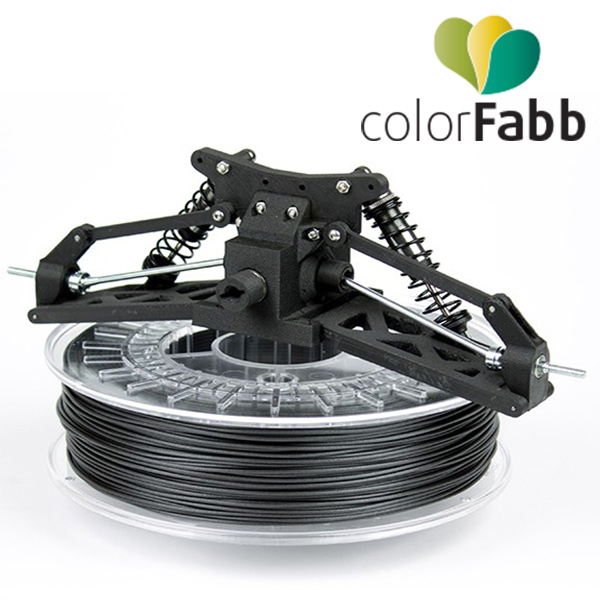Formlabs ESD Resin
246,76€ ME ΦΠΑ
Increase the operational efficiency and improve the yield of your electronics manufacturing lines with ESD Resin, a cost-effective solution to create custom ESD-safe production tooling. Use ESD Resin to prototype and validate electronics production workflows, print static-dissipative parts that repel dust and powder, and create enclosures to protect sensitive electronics from static discharge.
Supports print resolutions: 100 and 50 microns (printer dependent). Post-curing required. Printer compatibility: Form 3(+), Form 3L, Form 3B(+), Form 3BL, Form 3, Form 3B.
Increase the operational efficiency and improve the yield of your electronics manufacturing lines with ESD Resin, a cost-effective solution to create custom ESD-safe production tooling. Use ESD Resin to prototype and validate electronics production workflows, print static-dissipative parts that repel dust and powder, and create enclosures to protect sensitive electronics from static discharge.
Supports print resolutions: 100 and 50 microns (printer dependent). Post-curing required. Printer compatibility: Form 3(+), Form 3L, Form 3B(+), Form 3BL, Form 3, Form 3B.
What is Electrostatic Discharge?
Electrostatic discharge (ESD) occurs when there is a sudden flow of electricity between two charged objects. Static electricity accumulates when there is friction between multiple insulating components. When one of these components comes in contact with a conductor, the electricity discharges into the conductor. This is particularly dangerous in the electronics industry, where ESD-sensitive parts such as circuit boards can be damaged from unregulated static discharge. Something as small as the friction created by a jig touching an enclosure can cause a buildup of electrons and result in an electrostatic discharge, shorting out electrical components and leading to a nonfunctional product. Lack of control over processes involving ESD sensitive parts can decrease overall production yield.
What are ESD Materials?
ESD materials dissipate static electricity in order to protect components that may be sensitive to static shock, like electronics. ESD materials are not true “conductors”, but electrons are able to flow across their surfaces to dissipate static shocks if they occur.
When grounded, ESD materials give electric charge a place to go, allowing the electrons to flow harmlessly across their surface and into a grounded point. An added benefit is that ESD materials are anti-static when grounded, meaning that small particles like dust, powder, and styrofoam won’t stick to them. In many electronics manufacturing facilities, these particles cause buildup and eventual failure to delicate electrical and mechanical systems. ESD materials for tooling and assembly procedures minimize the risk of failures both in cases of electric charge overload and static buildup. Manufacturers have traditionally relied on machined metals for these materials, but there are now solutions in 3D printing.
ESD Resin for 3D Printing Parts in Electronics Manufacturing
3D printing is a less expensive and faster alternative to machining in many applications, but there have previously been few options to 3D print high-quality ESD materials. They are either part of a high-priced system out of the reach of many small- to medium-sized manufacturers, or they are printed on lower quality machines, and unreliable in industrial environments.

Formlabs SLA printers with ESD Resin now offer a solution that is vital for specific applications and workflows across a broad range of industries. Many manufactured products have electronics components, and thus need ESD-safe materials for handling them.
When prototyping manufacturing parts, testing and validation require all components to function together, and electronic components need to operate smoothly. Machining is expensive to outsource, coming with long lead times, which prohibits manufacturers from getting their products out of the prototyping stage. Because the toughness of ESD Resin is higher than that of many other 3D printed ESD-safe materials, engineers can prototype without risk of mechanical or electrical failure.
A prototype powder-handling tube within the Fuse Sift, printed in ESD Resin. Its anti-static nature allows powder to flow freely instead of clinging inside the tube.

On a production line involving electrical components, ESD-safe materials are necessary at all contact points, so jigs and fixtures have typically been machined out of metals, which are conductors by nature. Now, manufacturers can print jigs and fixtures in ESD Resin to safely divert static electricity away from sensitive electrical parts. The high modulus and toughness of ESD Resin make it ideal for production environments where strength and durability are critical.
The ESD Resin sample part is a fixture to support a multimeter probe during use, reducing the likelihood of static charge buildup while allowing engineers to take readings hands-free.

After assembly, electrical components need to be safely enclosed and held during different stages of the process, or before leaving the factory floor. Holding trays are large and often have customized geometries, making them expensive to machine. With ESD Resin, holding trays and enclosures can be quickly manufactured to custom fit the product specifications and safely hold the products without static from the room or contact from handlers shorting out the part.
This component tray made from ESD Resin holds integrated circuit boards for safe storage and transportation in a manufacturing facility.

Επιπλέον πληροφορίες
| Technology | |
|---|---|
| Resin Type | |
| Resin Brand |

















